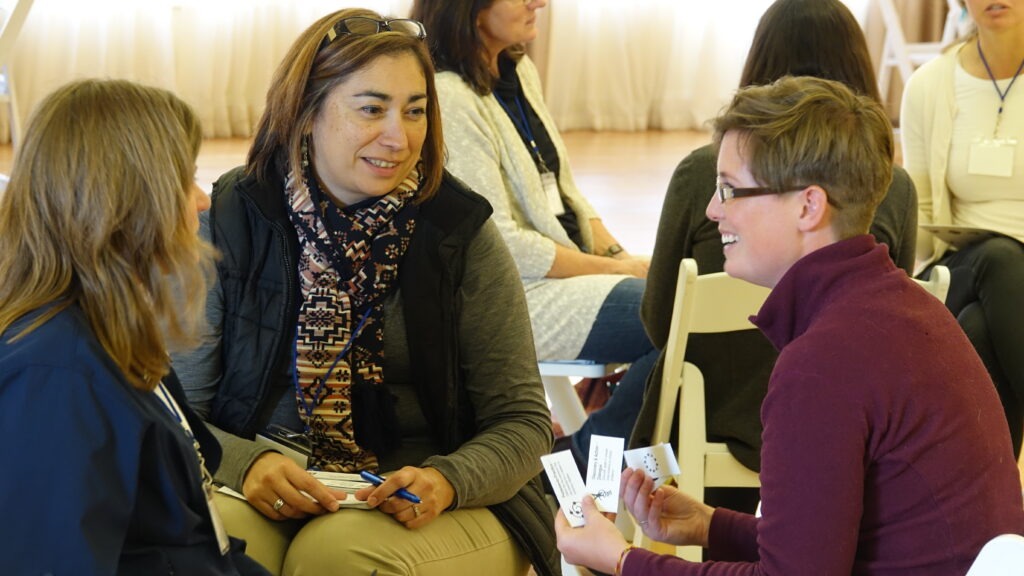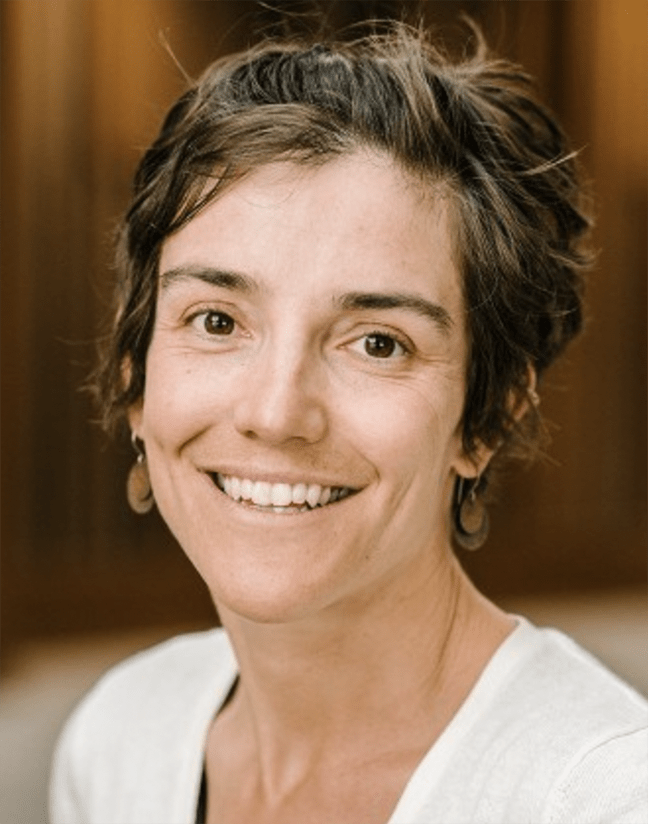As you may have noticed, we humans don’t always get along. We fight over land, we argue that we aren’t getting our fair share of water, we dig in our heels about whatever we think should be rightfully ours.
As Danya Rumore is fond of saying: “Conflict just is.”
Rumore is director of the Wallace Stegner Center’s Environmental Dispute Resolution (EDR) Program, where increasingly the focus is on teaching the kinds of skills that can turn inevitable differences into what she calls “elegant solutions,” co-created by the very people who are at odds.
“We’re never going to see eye-to-eye about everything,” Rumore says, “and we need to harness the generative potential of that to learn, grow, and create new and better things.”
learn, grow, and create new and better things.”
To advance its mission of fostering a culture of collaboration, the EDR Program offers a Collaboration Certificate Course geared to mid- and upper-level professionals whose work centers around environmental and natural resources issues. Now in its sixth year, the course has graduated over 100 participants, representing a who’s who of Western governmental agencies, industries, environmental organizations and outdoors enthusiast groups, such as Breathe Utah, Rio Tinto Kennecott, Snowbird, and the U.S. Forest Service.
The 84-hour, highly-interactive professional training is offered virtually over six months, and is co-taught by Rumore and Nedra Chandler, associate director of the EDR Program. The course teaches the “art and science” of effective collaboration and conflict resolution through lectures, exercises, negotiation simulations and a “situation assessment” project, in which students assess opportunities for collaboration around a real-world issue.
Collaboration is “not just kumbaya, let’s all get along,” says Rumore. “It’s not just ‘be nice.’ It’s not just getting together and talking. And it’s not the same as compromise,” where the results are often watered-down versions of what each side wants and no one is happy with the outcome. Instead, if the process is done well, the different factions in a conflict work together to negotiate creative solutions that meet everyone’s “core needs.”
Instead of a metaphorical pie that needs to be split up, “this is about expanding the pie,” notes Tara Hetz, a graduate student in Parks, Recreation and Tourism, who is taking the course this year.

The first step, originally articulated in the four-decade best-seller “Getting to Yes,” is to get past “positions” (“There should be no mountain bikes on hiking trails, period!”) and instead try to discern each side’s underlying “interests” (let’s make sure trails are safe). When we’re stuck insisting on our positions, Rumore notes, “there’s a good chance we might both lose.”
To get to the bottom of what stakeholders really want in a complicated environmental issue, Chandler says the EDR Program teaches course participants to come at problems with a curious, beginner’s mind, the way a 5th grader might, avoiding assumptions. She calls it The Nine Whys, because it often takes asking “why” that many times to figure out the underlying wishes of people in conflict. “The hardest thing to learn,” says Chandler, “is to listen to learn, not listen to fix.”
Take, for example, the perennial conflict between cattle grazers and conservation groups over grazing on public lands. By digging deep to understand the whys behind their positions, the parties can help illuminate the interests of both sides. A conservation group might be saying “no grazing on this land ever!” (a position), when the interest is a concern about keeping the land healthy. The grazer’s position might be “don’t tell me where I can graze my cattle!,” when the underlying need is protecting a way of life and making a living.
Working together, the two sides often find they have interests in common. They may find they have a shared desire to protect streams, even if their reasons are different. Focusing on interests enables them to identify mutual-gains strategies. Maybe they agree to have a conservation group help put up fencing to keep cattle out of the water so more cattle can be grazed with less impact.
Doing this kind of interest-based negotiation means “we don’t have our swords up,” says Jordan Katcher, who took the Collaboration Certificate Course last year and now is the EDR Program’s Initiatives Facilitator. “We can see each other as humans. Once that shift happens, that’s hopeful.”
Are collaboration attempts always successful? Well, says Rumore, “define successful.” People in the field of environmental dispute resolution “recognize the complexity of the world, and usually define successful as ‘We’re moving in a positive direction, we’re better off than when we started.’”
Sometimes, she adds, a situation isn’t ripe for a formal collaboration process. But a situation is always ready for people to be skillful in how they deal with conflict. Unfortunately, she says, “many people haven’t been taught how to do that.”
As Josh Johnson, a 2021 Certificate Course graduate who works for the Idaho Conservation League, notes, “we come out of the training with all these great skills, and you wish the other stakeholders had the training, too.”
To reach more people, Rumore is writing a book about how to make conflict productive. She hopes it will reach “every person who wants to deal with conflict—not just third-party facilitators, but anyone who might get embroiled in a contentious situation.”
“I wish we could train all our decision-makers,” she says. “Not to do political negotiations, which is what is happening now, but actually do mutual-gains, interest-based negotiation. It would be a really different world.”
Rumore and her colleagues have also launched a Collaborative Leadership Network to provide continuing education and coaching opportunities for graduates of the Certificate Course and other training programs.
“What I feel strongly about, based on a lot of evidence,” she says, “is that anyone can learn to be more collaborative.” However, she adds, “it takes practice.”
